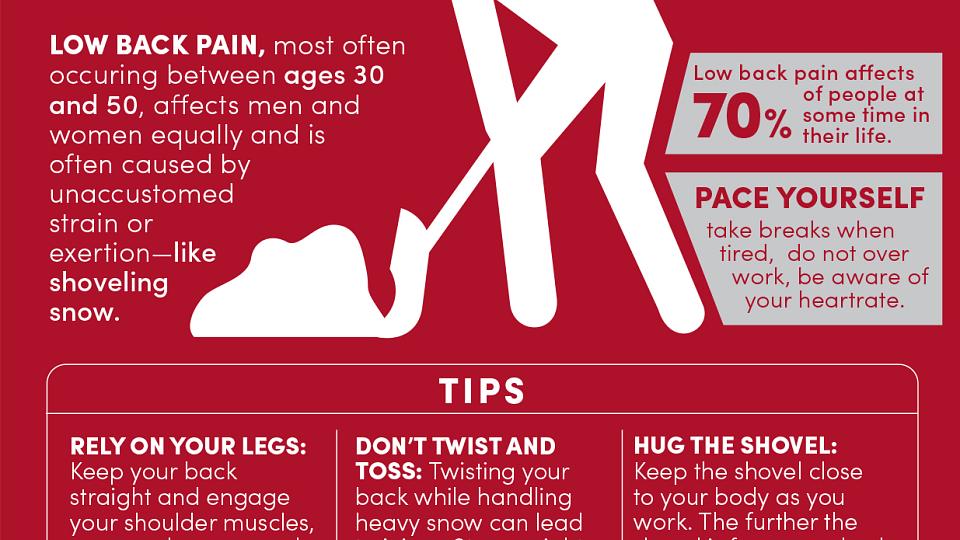
What to Do for a Pinched Nerve in Your Back
A pinched nerve can be very painful—no matter where it’s located in your body. If you experience one in your back, it can travel to other parts of the body and cause sharp pain, tingling, numbness, or weakness.
"We have nerve roots that leave the spinal column at every level, and they can become impinged or trapped,” says Zachary McCormick, MD, a physical medicine and rehabilitation (PM&R) physician at University of Utah Health. “It's a very common source of pain.”
Causes of a Pinched Nerve
A pinched nerve in your back is most often caused by either disk herniation or spinal stenosis.
- Herniated Disk: A herniated or “slipped” disk is when a portion of the disk bulges out, usually entering the spinal canal or the channel where the nerve root exits. This then pinches one or more nerves.
- Spinal Stenosis: Any narrowing within the spinal canal where the nerves exist, though spinal stenosis typically refers to narrowing caused by arthritis in the spine or other extra bony growths.
Other causes of a trapped nerve include spinal cysts that press on a nerve as well as spondylolisthesis, or slipping between two spinal segments. Both can cause narrowing where nerves exit the spine.
People often think of sciatica as pain that radiates from the lower back and down the posterior or lateral leg. “That's true, but really, it's not the sciatic nerve that's impinged or compressed as the term would suggest," McCormick says. "It's actually one or more spinal nerve roots in the lumbar spine, distributing through the sciatic nerve."
How to Get Rid of a Pinched Nerve
Most people associate the onset of a pinched nerve with moving a couch, holding something heavy out in front of their body, or a bending/twisting movement.
“They might be loading their lower back with the weight, rather than lifting with their knees in a spine-neutral posture, and that can cause disk herniation," McCormick says.
Treatment usually starts with physical therapy and activity modifications. A physical therapy program is built based on positional preferences to try to reduce pinched nerve symptoms.
Pinched nerve treatments include:
- Positional assessment to find what movements might reduce an individual's pain symptoms
- Anti-inflammatory medications
- Epidural cortisone injections
- Minimally invasive spinal decompression
- Surgical spinal decompression
- Spinal fusion
"If conservative treatments aren't working, or if there's a neurologic change and developing weakness pointing to nerve damage, surgery may be necessary," McCormick says.
Treatment at Home
Positions can help reduce stress and load on bulging or herniated disks that can change the amount of pressure placed on the nerve, letting it heal, such as:
- Lumbar spinal extension positions: While lying flat on your belly, press up to lift your chest off the floor.
For a pinched nerve related to spinal stenosis:
- Motions or positions that bring the knees toward your chest
- Adequate rest
- Gentle movements
- Over-the-counter pain relievers
McCormick notes that at-home treatment isn't an option for Cauda Equina Syndrome. This condition is typically caused by a very large upper lumbar disk herniation, compressing multiple nerve roots such that one has significant leg and/or foot weakness, numbness in the saddle region, and potentially bowel and bladder incontinence. Lack of medical treatment can lead to permanent symptoms.
Preventing a Pinched Nerve in Your Back
Are you reading this while sitting slouched at a desk? Sit up straight to protect yourself! Maintaining good posture, lifting smart, and keeping a strong core all help reduce the chances of developing a pinched nerve.
"If you sit for prolonged periods, get lumbar support and maintain your head over your shoulders while keeping your shoulders back, reducing disk load," McCormick says.
It's also important to take breaks—get up and walk around, even just for five minutes every hour or two.
Leg Pain in Older Adults Could Be Spinal Stenosis
Persistent leg pain that flares up while walking and fades with rest may point to a hidden condition of the spine. Orthopedic spine surgeon Darrel Brodke, MD, about how spinal stenosis can compress nerves, disrupt mobility, and quietly erode quality of life.



